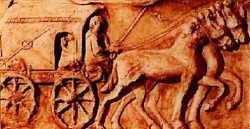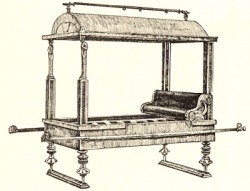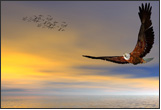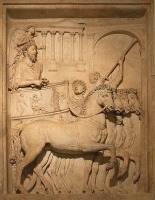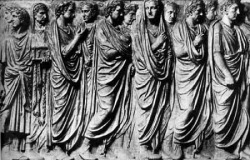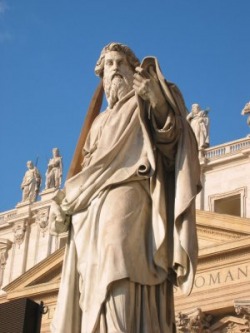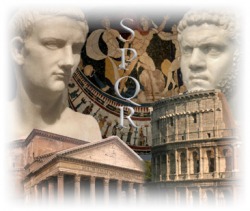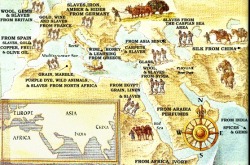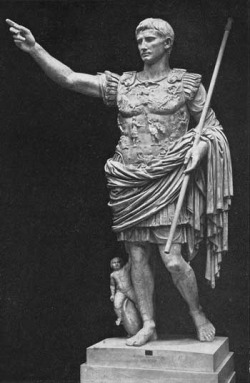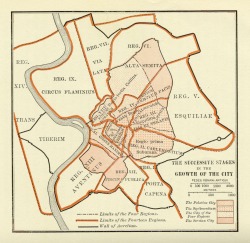Rome
Roman Monarchy
Transportation By Matt M.
In Ancient Rome there are a few different ways of transportation. The one way to travel is by land. The most common way to get around in Ancient Rome is by walk, if you don't have much money of high powered. There also in a Lectica, which has four legs and a couch like set, is carried by the slaves. (Lectica is the picture below) The Government would use horses to travel for place to place, they also use the horses for taking letters and other mail to people. The military also used horse. They also used mules to pull a wagon, where they carry goods and foods to other cities.
The other way to travel around Rome is by sea. They used ships and barges to transport goods and others. The ships that they used were powered by a lot of people rowing the ship. Also they had sailboats to transport things. They also used the ships in battles and wars. The ships and boats were faster ways to transport people and foods.
The other way to travel around Rome is by sea. They used ships and barges to transport goods and others. The ships that they used were powered by a lot of people rowing the ship. Also they had sailboats to transport things. They also used the ships in battles and wars. The ships and boats were faster ways to transport people and foods.
Work Cited
"Ancient Roman Transportation." West Publishing Company, n.d. Web. 3 May 2010. <http://www.crystalinks.com/rometransportation.html>.
Pets/Kids/Teens/Leisuretime- By:Travis Muller
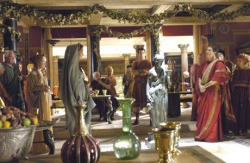
Pets: Wolves, bears, wild boar, deer and goats were native to early Rome and other animals were introduced later. Elephants, leopards, lions, ostriches and parrots were imported in the 1st Century B.C. followed by the hippopotamus, rhinoceros, camel and giraffe. The romans really liked watching these wild animals which were eventually hunted and killed. Leisure time: Chariot racing was Romes oldest and most popular event to watch in the ancient times of the Monarchy.Also they had circuses with steats around a u-shaped area. Many places also had theaters for entertainment.
Travis Muller - Resources
"life in rome." daily life (n/a): n/a. Web. 2 May 2010. http://www.teacheroz.com/romans.htm.
joyce, bryan. "ancientromeppt.." roman monarchy. windom: windom schools, 2010. Print.
shmidt, kevin. "Roman clothing." n/a (2006): n. pag. Web. 2 May 2010. <http://oldandsold.com/article.509/clothes>.
"life in rome." daily life (n/a): n/a. Web. 2 May 2010. http://www.teacheroz.com/romans.htm.
joyce, bryan. "ancientromeppt.." roman monarchy. windom: windom schools, 2010. Print.
shmidt, kevin. "Roman clothing." n/a (2006): n. pag. Web. 2 May 2010. <http://oldandsold.com/article.509/clothes>.
Hairstyles- By: Travis Muller
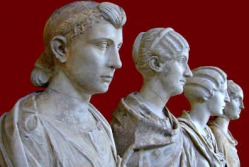
Believe it or not hairstyles were very important to men and women in acient Rome, it showed class, beauty, and intellect. In the begining the men showed good style by having a healthy and long beard but other than that there were little general styles. Barbers were called "tonsores".
Clothing- By: Travis Muller
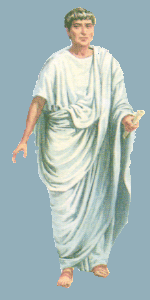
Antiquarians, tunic and the toga are said to have been the main articles of clothing of the 509 BCE Romans. "The last king of Rome, Tarquinius Priscus, expelled in 509 B.C., introduced these from Etruria". Peoples Togas told a lot about themselves, like how important or wealthy they were. They were arranged carefully and were stylish. They were usually white or purple and black was usually only used for Mourning. Men had trimmed beards, and wore wigs to hide baldness.
Inequality sex by: Doug Tabb
The difference between men and women in monarchy Rome was they were not treated equaly. Its like men were the top dogs of monarchy Rome but the women,in My opinion women had the easiest job . Unlike men women were expected to stay home everyday so they could complete all the chores around the house and watch the children while the men were at work. Very few women were allowed to hold jobs such as being a teacher or doctor. On the other hand women with the wealthy husbands lived diffrently from those with poor husbands. If you were a wealthy women in Rome you would be spending a whole entire day planning a dinner to take place when your husband get home.
Monarchy Rome men were the most distinguished people in ancient Rome. Even their cloths were more stylish so all Roman citizens would recognize that the men were of a higher status than other Romans. The men were the masters of the house and the family.During the day they worked outside of the home. Rich men had roles very different from the regular men of monarchy Rome. The regular men in monarchy rome were craftsmen, shop keepers, or farmers. If you had been a poor man in rome you would have started at first light or u would be working in the fields with the rest of the poor men
It was said that most roman women wrote journals but no ancient journals or personal diares written by roman women were uncovered, so it is not known what their hopes and dreams were, or if they had any.What Roman felt about most political issues and the numerous wars and upheavels is also a mystery. Nor can we read about what women thought or slavery, marriage or the fact they had no legal rights over their children or even themselves.
Monarchy Rome men were the most distinguished people in ancient Rome. Even their cloths were more stylish so all Roman citizens would recognize that the men were of a higher status than other Romans. The men were the masters of the house and the family.During the day they worked outside of the home. Rich men had roles very different from the regular men of monarchy Rome. The regular men in monarchy rome were craftsmen, shop keepers, or farmers. If you had been a poor man in rome you would have started at first light or u would be working in the fields with the rest of the poor men
It was said that most roman women wrote journals but no ancient journals or personal diares written by roman women were uncovered, so it is not known what their hopes and dreams were, or if they had any.What Roman felt about most political issues and the numerous wars and upheavels is also a mystery. Nor can we read about what women thought or slavery, marriage or the fact they had no legal rights over their children or even themselves.
You can find this information at(http://chalk.richmond.edu/education/projects/webunits/greecerome/rumerroles.html)
The RICH MAN
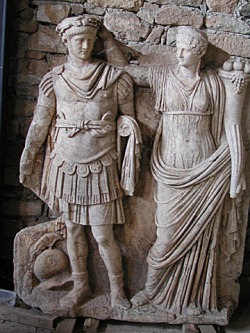
- The rich men in monarchy rome were the powerful head leaders of rome.
-The rich men always had females servants on their side to clean them and bring them food
THE RICH MAN DAILY SCHEDULE
-The rich men always had females servants on their side to clean them and bring them food
THE RICH MAN DAILY SCHEDULE
Did you know if you were a rich man in rome you would have begun your day putting on your toga and eating breakfast of bread, cheese, honey, and water. Before leaving for town you would pray at the house hold shrine. The rich man would then begin his work which might include writing letters to other romans, seeing clients and going to the forum to meet other buisness men. After a light lunch, you might take a nap, get a haircut, and finish your work for the day. In the afternoon, all of the roman men went to the public bathes, then home to enjoy a dinner with friends.
The women of Rome
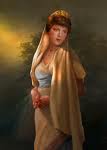
The women of Rome always stayed at home and took care of the children while the men of the house worked in the fields
Housing- By: Travis Muller
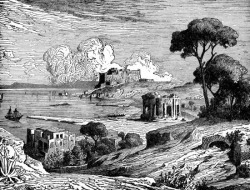
The Ancient Romans lived in different types of (houses) depending on who they were the plebeians (lower class) lived in apartment type buildings called flats above or behind shops. Some had running water and were fairly nice, but others were not very nice at all, also sometimes a whole family including grandparents lived in one room. If it didn't have running water they had to haul it in from public facilities. They never had toilets, fire was also a hazard because they were mad out of wood.
The upper class lived in much nicer condition with the entire family including great grandparents. They were made of bricks and they had few windows, the walls were decorated and they had mosaic floors. There was little furniture, and very nice ones had toilets and lots of different rooms.
The upper class lived in much nicer condition with the entire family including great grandparents. They were made of bricks and they had few windows, the walls were decorated and they had mosaic floors. There was little furniture, and very nice ones had toilets and lots of different rooms.
Random Roman Facts by Austin and Christian

Cappuccino was named after the Roman order of monks, the Capuchin. They wore a hood called a cappucio.
After an emperor died, an eagle was released to take his soul to heaven. This was a symbol of the god Jupiter.
In battle, Romans sometimes grouped together and held there shields all around them in a move called the "tortoise."
Slaves in Ancient Rome made up more than 40% of the population.
In Ancient Rome Gladiators fought to the death.
Purple was the most expensive color and only the rich and famous wore purple.
Romans were the first civilization to use the arch and concete.
Romans rang bells because they thought it would ease tension during child birth.
For Romans a circus was a chariot race track.
The word "palace"comes from the Palatine Hill, where Augustus established the emperors' tradition of building there palace.
A man could lose Roman citizenship if he tried to get out of the army by mutilating himself, or deserted the army, or dodged the census so he wouldn't have to pay taxes.
Sources:
"93 Facts About Rome." Random Facts. Random Hisory, 7 Mar 2009. Web. 28 Apr 2010. http://facts.randomhistory.com/2009/03/07_rome.html.
Joe, Jimmy. "Facts & Figures All Things Roman." Timeless Myths. Timeless Myths, 24 June 2006. Web. 29 Apr 2010. http://www.timelessmyths.com/classical/allthings.html.
"Welcome to Hadrians." Hadrians.com. Carbuncle, 2001. Web. 28 Apr 2010. <http://www.hadrians.com/rome/romans/sources/ancient_rome_facts.html>.
After an emperor died, an eagle was released to take his soul to heaven. This was a symbol of the god Jupiter.
In battle, Romans sometimes grouped together and held there shields all around them in a move called the "tortoise."
Slaves in Ancient Rome made up more than 40% of the population.
In Ancient Rome Gladiators fought to the death.
Purple was the most expensive color and only the rich and famous wore purple.
Romans were the first civilization to use the arch and concete.
Romans rang bells because they thought it would ease tension during child birth.
For Romans a circus was a chariot race track.
The word "palace"comes from the Palatine Hill, where Augustus established the emperors' tradition of building there palace.
A man could lose Roman citizenship if he tried to get out of the army by mutilating himself, or deserted the army, or dodged the census so he wouldn't have to pay taxes.
Sources:
"93 Facts About Rome." Random Facts. Random Hisory, 7 Mar 2009. Web. 28 Apr 2010. http://facts.randomhistory.com/2009/03/07_rome.html.
Joe, Jimmy. "Facts & Figures All Things Roman." Timeless Myths. Timeless Myths, 24 June 2006. Web. 29 Apr 2010. http://www.timelessmyths.com/classical/allthings.html.
"Welcome to Hadrians." Hadrians.com. Carbuncle, 2001. Web. 28 Apr 2010. <http://www.hadrians.com/rome/romans/sources/ancient_rome_facts.html>.
Sports/Athletics: by Cole Bucher And Trevor Cuppy
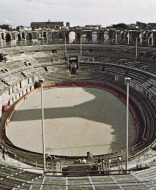
The city of Rome used to be called "Campus Martius" meaning "field of Mars" the campus was located by the tiber River, it was called campus Marius because it was later turned into a track and field type area were kids, to soldiers and even Julius Caesar and Augustus were said to frequented and would go fight, box, wrestle, train, and play. Some of the sports that the ancient romans have been believed to play are: Ball sports, boxing, chariot racing, hunting, swimming, gladiators, and then the Olympic games.
Ball Sports were the most popular games to play, but some of the "ball sports" were related to some modern day games and the games that were the most related to modern day sports were handball, field hockey, catch, Trigon, Soccer, Harpasta, Phaininda, Episkyros, dodge ball, and a form of football. But only the men in the family were the ones to play the sports because the women would either work or they would stay home and take care of the children and clean their house.
Http://www.experiencefestival.com/a/Ancient_Rome_-_Culture/id/4929818
August 27, 2008
http://www.britannica.com/EBchecked/topic/507905/ancient-Rome/26589/The-regal-period-753-509-bc
http://www.crystalinks.com/romerecreation.html
Ball Sports were the most popular games to play, but some of the "ball sports" were related to some modern day games and the games that were the most related to modern day sports were handball, field hockey, catch, Trigon, Soccer, Harpasta, Phaininda, Episkyros, dodge ball, and a form of football. But only the men in the family were the ones to play the sports because the women would either work or they would stay home and take care of the children and clean their house.
Http://www.experiencefestival.com/a/Ancient_Rome_-_Culture/id/4929818
August 27, 2008
http://www.britannica.com/EBchecked/topic/507905/ancient-Rome/26589/The-regal-period-753-509-bc
http://www.crystalinks.com/romerecreation.html
Government and Religion
By Ashley Gehl, Hannah Burton, and Meredith Hentges
The Roman Monarchy was the first part of Rome's development. During the Monarchy, Rome created their own rules and way of life. Rome took many of Greece's ideals into consideration when forming their government and religion. The Monarchy combined government and religion to make the laws of Rome to which the people followed.
Government in the Roman Monarchy was mainly ruled by Kings. From 753-509 BCE lived the Seven Kings of Rome, who were chosen by the people. The King who reigned at the time made people take an oath, saying they would allow no one else to be King until his reign was over. Executive powers of the King were both civil and military. Although the King was the main ruler, he turned to other bodies of government for help when needed. The first body of government the King may have turned to was called the comitia. The comitia is an assembly of all the citizens. The elect two consuls to rule for a single year. The consuls main job was to lead the army to battle. Each consul was supreme, unless objected by the other consul. Consuls also had all the luxurious priviledges of the King. The second body of government the king may have turned to was called the Senate of Veteran Councilors. With help from the comitia, the two bodies of government could make laws for Rome. As one can see, the King was not the only one ruling over the Roman Monarchy.
The Roman people had symbols that would represent their gods. Such as the Lare, which is someones most valued personal or household effects, and the Lare had the symbolic symbol.
Religion:
Religion for the Romans was really the state's official's responsibility not the individual people of Rome. In Rome there were many different religious post. A post served a different purpose in the Roman's religion. There was approximately five different post, which were: Pontiffs, Haruspexs, Augurs, Flamens, and Vestel Virgins. The Pontiffs would organize the Roman Calendar setting dates of religious festivals and special events for the Roman people. The Pontiffs were sometimes bribed by politicians to make a false month so that the politicians term would be longer. The Haruspexs was a priest that was respected very highly of the people. He was very important because he was known that he could tell the future. Augurs overlooked and decided if the gods approved of the government's actions. There are sixteen Augurs and when they were elected they were elected for life. Flamens were chief priests who conducted different sacrifices. There was three major Flamens. The Flamens represented Jupiter, Mars, and Quirinus. The Vestal Virgins cared for the sacred fire of Vestal who was the goddess of hearth. The Vestal Virgins had to make sure that the sacred fire was always burning and make sure that it never died. If the flame was to go out then that would mean that there will be destruction to the city.
Religious Practices:
An example of a religious practice is that there is a sacred fire in each and every house. The fire is cared for and it cannot burn out. There are many different steps into caring for the sacred fire. The Romans always made sure that there was coals or ashes on the fire. It was just a normal custom that the man of the house or the person ahead of the house was to take care of the fire. There was also many different steps to lighting the fire. The Romans could only burn a certain type of wood the fire also had to stay "pure" which means no bad things could have been done in front of the fire. There was only one day of the whole year that the fire could be put out but it would have to be re-lighted immediately. A Roman family would sacrifice many different things to the sacred fire. The Romans made offerings such as flowers, wine, victims, and fruit. They believed that the fire would bring them good health and protection. Worshiping the dead also included the sacred fire. They would worship the dead as if they were like god's that way their spirit wouldn't come back to haunt them. The family would make many offerings and ask the spirit of the dead family member to protect them. There was even a law saying if you were to step on a tomb stone of someone outside of their family you must repent or the dead person of the tomb would come back and haunt you. The Roman's called their dead Manes. There was a big altar that was in a temple that the Romans would make many sacrifices to. If there was not a funeral then they believed that the dead would immediately leave the tomb and become wandering "shades" of the night. They also believed that the spirit would go around causing pain and disease to their family until there is a funeral. There were even laws to go by burying the dead. For example if you are not a blood relative of the family then you can not come to the funeral it disturbs the Mane. Also if a person was to go by and touch the tomb they must repent and purify themselves.
Government in the Roman Monarchy was mainly ruled by Kings. From 753-509 BCE lived the Seven Kings of Rome, who were chosen by the people. The King who reigned at the time made people take an oath, saying they would allow no one else to be King until his reign was over. Executive powers of the King were both civil and military. Although the King was the main ruler, he turned to other bodies of government for help when needed. The first body of government the King may have turned to was called the comitia. The comitia is an assembly of all the citizens. The elect two consuls to rule for a single year. The consuls main job was to lead the army to battle. Each consul was supreme, unless objected by the other consul. Consuls also had all the luxurious priviledges of the King. The second body of government the king may have turned to was called the Senate of Veteran Councilors. With help from the comitia, the two bodies of government could make laws for Rome. As one can see, the King was not the only one ruling over the Roman Monarchy.
The Roman people had symbols that would represent their gods. Such as the Lare, which is someones most valued personal or household effects, and the Lare had the symbolic symbol.
Religion:
Religion for the Romans was really the state's official's responsibility not the individual people of Rome. In Rome there were many different religious post. A post served a different purpose in the Roman's religion. There was approximately five different post, which were: Pontiffs, Haruspexs, Augurs, Flamens, and Vestel Virgins. The Pontiffs would organize the Roman Calendar setting dates of religious festivals and special events for the Roman people. The Pontiffs were sometimes bribed by politicians to make a false month so that the politicians term would be longer. The Haruspexs was a priest that was respected very highly of the people. He was very important because he was known that he could tell the future. Augurs overlooked and decided if the gods approved of the government's actions. There are sixteen Augurs and when they were elected they were elected for life. Flamens were chief priests who conducted different sacrifices. There was three major Flamens. The Flamens represented Jupiter, Mars, and Quirinus. The Vestal Virgins cared for the sacred fire of Vestal who was the goddess of hearth. The Vestal Virgins had to make sure that the sacred fire was always burning and make sure that it never died. If the flame was to go out then that would mean that there will be destruction to the city.
Religious Practices:
An example of a religious practice is that there is a sacred fire in each and every house. The fire is cared for and it cannot burn out. There are many different steps into caring for the sacred fire. The Romans always made sure that there was coals or ashes on the fire. It was just a normal custom that the man of the house or the person ahead of the house was to take care of the fire. There was also many different steps to lighting the fire. The Romans could only burn a certain type of wood the fire also had to stay "pure" which means no bad things could have been done in front of the fire. There was only one day of the whole year that the fire could be put out but it would have to be re-lighted immediately. A Roman family would sacrifice many different things to the sacred fire. The Romans made offerings such as flowers, wine, victims, and fruit. They believed that the fire would bring them good health and protection. Worshiping the dead also included the sacred fire. They would worship the dead as if they were like god's that way their spirit wouldn't come back to haunt them. The family would make many offerings and ask the spirit of the dead family member to protect them. There was even a law saying if you were to step on a tomb stone of someone outside of their family you must repent or the dead person of the tomb would come back and haunt you. The Roman's called their dead Manes. There was a big altar that was in a temple that the Romans would make many sacrifices to. If there was not a funeral then they believed that the dead would immediately leave the tomb and become wandering "shades" of the night. They also believed that the spirit would go around causing pain and disease to their family until there is a funeral. There were even laws to go by burying the dead. For example if you are not a blood relative of the family then you can not come to the funeral it disturbs the Mane. Also if a person was to go by and touch the tomb they must repent and purify themselves.
Works Cited
Adock, F, M.P. Charlesworth and Cook. Cambridge Ancient History. Great Britain University Press 1965.
Bendon Nagle D., and Stanley Burstein. The Ancient World: 2nd Ed. Upper Saddle River, New Jersey. Pearson Education Inc. 2002.
De Coulanges. Fustel Ancient City. New York: Metropolitan Museum. 1924.
McClees, Helen. Daily Life of Greeks and Romans. New York: Anchhor Books, 1873.
Stearns Davis, William. A Day Old in Rome, A Picture in Roman Life
New York: Biblo and Tannen, 1963
http://travelblog.viator.com
Bendon Nagle D., and Stanley Burstein. The Ancient World: 2nd Ed. Upper Saddle River, New Jersey. Pearson Education Inc. 2002.
De Coulanges. Fustel Ancient City. New York: Metropolitan Museum. 1924.
McClees, Helen. Daily Life of Greeks and Romans. New York: Anchhor Books, 1873.
Stearns Davis, William. A Day Old in Rome, A Picture in Roman Life
New York: Biblo and Tannen, 1963
http://travelblog.viator.com
Technology/Tools/Architecture/Engineering: By Salvador C.
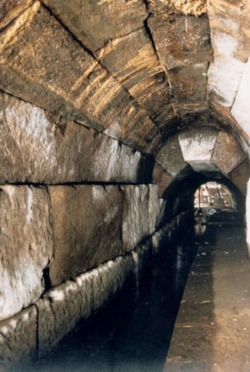
Cloaca Maxima
Little is known about the roman forms of technology, tools, architecture, and engineering, in the Roman Monarchy time period. The Etruscan Civilization lived betweem 950 and 300 B.C.E. in what is now known as Italy. They were the first civilization that migrated to Rome. They originated from Asia Minor. The Etruscan forefathers could have came in contact with those of the Mesopatamian civilisation, and could of adopted some of their customs and traditions.
Many different styles of engineering were brought to the Etruscans by different comunities around. The arches, for example, were originated from Mesopatamia, and were used in the later years for many of their structures. The pillars that the Etruscans used were oriniated from the idea of the Greeks, such as the Corinthian, Doric, and Ionian orders.
Architecure and Engineering came hand in hand for the Etruscans. The Cloaca Maxima dated, 578 B.C.E, is one of the few structures built in this time period. The Etruscans lived in a grid system where there were sewage pipes located underneath the city. They constructed the Cloaca Maxima to drain the vallys between the hills of Rome. The drainage system was constructed of peperino stone and had a span of 11 ft in the center of the semicircle. These arcs are an Example of one of the oldest forms of architectures.
Many different styles of engineering were brought to the Etruscans by different comunities around. The arches, for example, were originated from Mesopatamia, and were used in the later years for many of their structures. The pillars that the Etruscans used were oriniated from the idea of the Greeks, such as the Corinthian, Doric, and Ionian orders.
Architecure and Engineering came hand in hand for the Etruscans. The Cloaca Maxima dated, 578 B.C.E, is one of the few structures built in this time period. The Etruscans lived in a grid system where there were sewage pipes located underneath the city. They constructed the Cloaca Maxima to drain the vallys between the hills of Rome. The drainage system was constructed of peperino stone and had a span of 11 ft in the center of the semicircle. These arcs are an Example of one of the oldest forms of architectures.
Works Cited: Salvador C.
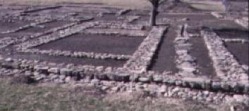
Streets drainage system
Etruscan Lifestyle http://mysteriousetruscans.com/lifestyle.html Web. 2 May. 2010
Roman Architecture-Examples of Etruscan Architecture http://www.oldandsold.com/articles22/architecture-26.shtml1921 Web. 29 April. 2010
Etruscan Engineering & Agricultural Achievements http://www.mysteriousetruscans.com/eng.html Web. 30 April. 2010
Roman Architecture-Examples of Etruscan Architecture http://www.oldandsold.com/articles22/architecture-26.shtml1921 Web. 29 April. 2010
Etruscan Engineering & Agricultural Achievements http://www.mysteriousetruscans.com/eng.html Web. 30 April. 2010
Laws by: Jessica Loder, Deandre Andreasen, & Ashley Goss
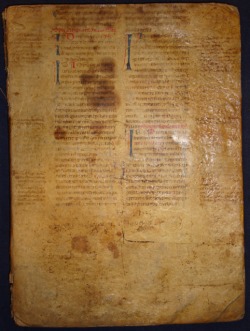
This photo is a Corpus Iuris Civilis was a Legial statutes from the duchy of savoy. the roman law made it a hugely popular in European laws.
Laws by: Jessica Loder, Deandre Andreasen, & Ashley Goss

The first written Roman law was the Twelve Tables in 450 B.C.E. Before 509 B.C.E, during the monarchy period , not alot is know about Roman low. There was a sharp distinction between public and private life.
In their public life, Romans obeyed the laws of the kings. They wanted citizens to be treated fairly. In private, the head of each household, or father, demanded they not have any restraints and have complete freedom. Only the head of each household was truly free. He held as much power over his wife and children as over his slaves. Husband and wife could not divorce. When a daughter married, a father's absolute power over his daughter,was according to custom, given to her husband. Every woman was always under the power of a man; a widow might be under the control of the oldest son. The head of the household could do as he wished with his family.
Work Cited
Duggan, Alfred. The Rromans. Clevland and New York: World Publishing Company, 1964
Blogs.law.yale.edu/…/archive/2010.102.aspx
Matthews, Roy T., and F. De We Witt Platt."Beginnings through the Renaissance". The Western Humanities 1 (2001):111.
Mayfield Publishing Company
In their public life, Romans obeyed the laws of the kings. They wanted citizens to be treated fairly. In private, the head of each household, or father, demanded they not have any restraints and have complete freedom. Only the head of each household was truly free. He held as much power over his wife and children as over his slaves. Husband and wife could not divorce. When a daughter married, a father's absolute power over his daughter,was according to custom, given to her husband. Every woman was always under the power of a man; a widow might be under the control of the oldest son. The head of the household could do as he wished with his family.
Work Cited
Duggan, Alfred. The Rromans. Clevland and New York: World Publishing Company, 1964
Blogs.law.yale.edu/…/archive/2010.102.aspx
Matthews, Roy T., and F. De We Witt Platt."Beginnings through the Renaissance". The Western Humanities 1 (2001):111.
Mayfield Publishing Company
Life Styles and Cultural Legacies-Ashley A, Harley V, Jackie D-M.
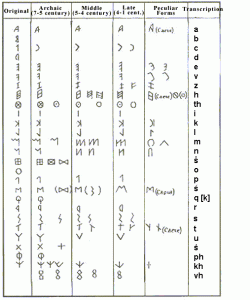
There are different life styles that the Ancient Etruscans had. Aristocracy were the Etruscan upper class members, which were the higher citizens, of the city-states and they were Italian origin or of non-Italian origin.Merchants and politicians alike aspired to be apart of the ruling oligarchy. The rulers of the Etruscans were called lucremones and wore purple robes. The Etruscans had a complex written language that has always been mysterious. The language is universally accepted as an isolated case and has been shown not to be related to any other languate. Its the origin of the alphabet is not in doubt, and in from an ancient Semitic-speaking people. The problem with the Etruscan language is not that it is indecipherable but it is that we do not understand the words and their forms.
Due to the fertile nature of the Etruscans land, the amount of grain and produce that was produced was enough to sustain the Etruscans and to help the Romans when a devastating famine hit the empire. Their diet mostly consisted of grains and meat, like faro, or pulses. Deer, beef, lamb, pork and mutton were all regularly eaten.
http://library.thinkquest.org/06aug/02100/
Works Cited.
Alward, Mary M. “Cuisine of the Etruscans.” Constant Content. 1 May 2003. 26 Oct. 2006 <http://http://www.constant-content.com/article/4371/Cuisine-of-the-Etruscans/>.
Delahunt, Michael. ArtLex on Etruscan Art. 2006. ArtLex. 25 Oct. 2006 <http://http://www.artlex.com/ArtLex/e/etruscan.html>.
“Etruria: The Etruscan Land.” Archaeology . 26 Oct. 2006 <http://www.tuscania-italy.com/archaeology/etruscans.htm>.
Hooker, Richard. “Rome: The Etruscans.” Washington State University. 1996. 26 Oct. 2006 <http://http://www.wsu.edu/~dee/ROME/ROME.HTM>.
Spurius. “An Etruscan Brief, A few short subjects.” Online posting. 8 May 2006. 26 Oct. 2006 <http://http://www.unrv.com/forum/index.php?showtopic=3802>.
“The History.” The Etruscans. 2004. 25 Oct. 2006 <http://http://www.larth.it/pages_eng/history.htm>.The Mysterious Etruscans. 25 Oct. 2006 <http://http://www.mysteriousetruscans.com/>.
“Where Did The Greeks Live?” The World Of The Greeks. Shefton Museum. 25 Oct. 2006 <http://http://www.ncl.ac.uk/shefton-museum/greeks/italy.html>.
Due to the fertile nature of the Etruscans land, the amount of grain and produce that was produced was enough to sustain the Etruscans and to help the Romans when a devastating famine hit the empire. Their diet mostly consisted of grains and meat, like faro, or pulses. Deer, beef, lamb, pork and mutton were all regularly eaten.
http://library.thinkquest.org/06aug/02100/
Works Cited.
Alward, Mary M. “Cuisine of the Etruscans.” Constant Content. 1 May 2003. 26 Oct. 2006 <http://http://www.constant-content.com/article/4371/Cuisine-of-the-Etruscans/>.
Delahunt, Michael. ArtLex on Etruscan Art. 2006. ArtLex. 25 Oct. 2006 <http://http://www.artlex.com/ArtLex/e/etruscan.html>.
“Etruria: The Etruscan Land.” Archaeology . 26 Oct. 2006 <http://www.tuscania-italy.com/archaeology/etruscans.htm>.
Hooker, Richard. “Rome: The Etruscans.” Washington State University. 1996. 26 Oct. 2006 <http://http://www.wsu.edu/~dee/ROME/ROME.HTM>.
Spurius. “An Etruscan Brief, A few short subjects.” Online posting. 8 May 2006. 26 Oct. 2006 <http://http://www.unrv.com/forum/index.php?showtopic=3802>.
“The History.” The Etruscans. 2004. 25 Oct. 2006 <http://http://www.larth.it/pages_eng/history.htm>.The Mysterious Etruscans. 25 Oct. 2006 <http://http://www.mysteriousetruscans.com/>.
“Where Did The Greeks Live?” The World Of The Greeks. Shefton Museum. 25 Oct. 2006 <http://http://www.ncl.ac.uk/shefton-museum/greeks/italy.html>.
Health and Medicine by Carly Wehmeyer
Pregnancy and Childbirth
The pregnancy for ancient romans was quite a unpleasent experience. Precgnancy and childbirth were filled with difficulty. Pregnancy carried a hight risk of illness or death for both the mother and the child being born. Studies of neonatal mortality estimates that 28-32% of roman babies died before their first birthday. All women delivered at home. Either in their own house or in a trusted friend/family member's house. People who could afford it, recieved the maternity care of midwifes. They waited until a child was 9 days old to name them. This was due to the high infant rate. Without anything for the pain it was a very painful and protracted experience. With the development of hippocratic medicine came significant advances in pregnancy and childbirth.
Child Mortality Rate
The child mortality rate was estimated at one time that 319 in every 1,000 infants died. Death in childhood was very common and high. Only 50 percent of children from wealthy familys lived to their twelfth birtday. Fewer children who were born to poor families lived or survived that long.
Common Diseases
Common diseases were: malaria, tuberculosis, typhoid fever, and gastroenteritis. It was estimated that each year several thousand people died from these diseases. Women and children ages 1-5 were especially vulnerable. It was estimated that as many as 2,000 people died per year at the peak of an epidemic. Malnutrition was a big issue except among the wealthy families. Doctors in Rome were quite advanced for their time period. The average age most people lived to be was 40.
Table showing average
life expectancy.
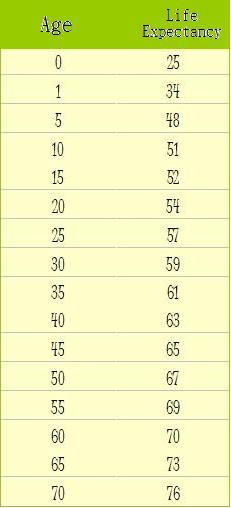
A child with malnutrition
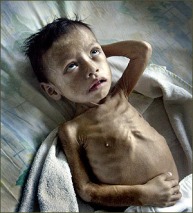
Wilk, James S. "Fertility, Pregnancy and Childbirth on the Coinage of Ancient Rome". forumancientcoins http://www.forumancientcoins.com/Articles/Pregnancy_and_Childbirth/Pregnancy_and_Childbirth_on_Roman_Coinage.htm
Bagnall, Roger Frier, Bruce Parkin, Tim Saller, Richard. "Roman Life Expectancy". utexas http://www.utexas.edu/depts/classics/documents/Life.html
Gigante, Linda. "Death and Disease in Ancient Rome". innominatesociety http://www.innominatesociety.com/Articles/Death%20and%20Disease%20in%20Ancient%20Rome.htm
Bagnall, Roger Frier, Bruce Parkin, Tim Saller, Richard. "Roman Life Expectancy". utexas http://www.utexas.edu/depts/classics/documents/Life.html
Gigante, Linda. "Death and Disease in Ancient Rome". innominatesociety http://www.innominatesociety.com/Articles/Death%20and%20Disease%20in%20Ancient%20Rome.htm
Music-Harley V, Jackie D-M, Ashley A.
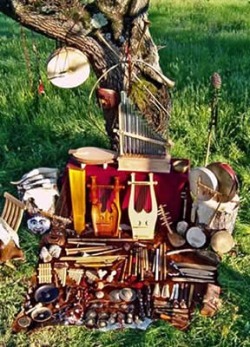
What we know of the Etruscan music comes to us from the impressions and feels gained from the many tomb illustrations, or from the mysterious inscriptions and sarcophagus lids. Most writers believe, based on the absence of music manuscripts, that the Etruscans seem to have more of an oral rather than a written musical tradition. The Liver Lintaeus of Zagreb, believed by some to be part of one the Etrsucan sacred books, appears to contain certain repetitive rhythmic phrases, which would indicate congregational involvement in the litturgies. Certain tablets found in Etruscan tombs also show rhythmic patters, indicative of poetry or verse. The important role of music in all significant aspects of life: banquets, religious celebrations, funeral rights; and its association magical and spiritual aspects tend to add weight to this argument.
There are two main instruments they used. Stringed instruments and Wind instruments. The wind instruments they used were Lyres, usually with seven strings (Heptacord), and Kithara or Barbitones. Lyres can be divides into two types: Those where the sound box was made of the shell of a turtle (lyra and barbitos) and those make of wood (kithara and phorminx). The Lyrae and Barbitos were used by amateur musicians and the kithara and phorminx were used by professionals. Wind instruments used was the Tuba which was a straight trumpet make out of copper or iron. It's main purpose was to give signals for tactical movements during battle. The Tibia is a type of flute. According to Livius, the Tibia was played by Etruscan musicians during the Ludi Scenici, organized durinig the fouth century BCE to counter the great plague of Rome.
Works Cited was not available, but the website used was http://www.mysteriousetruscans.com/lifestyle.html and used on 4/28/2010.
There are two main instruments they used. Stringed instruments and Wind instruments. The wind instruments they used were Lyres, usually with seven strings (Heptacord), and Kithara or Barbitones. Lyres can be divides into two types: Those where the sound box was made of the shell of a turtle (lyra and barbitos) and those make of wood (kithara and phorminx). The Lyrae and Barbitos were used by amateur musicians and the kithara and phorminx were used by professionals. Wind instruments used was the Tuba which was a straight trumpet make out of copper or iron. It's main purpose was to give signals for tactical movements during battle. The Tibia is a type of flute. According to Livius, the Tibia was played by Etruscan musicians during the Ludi Scenici, organized durinig the fouth century BCE to counter the great plague of Rome.
Works Cited was not available, but the website used was http://www.mysteriousetruscans.com/lifestyle.html and used on 4/28/2010.
Theatre-Jackie D-M, Ashley A, Harley V.
There were three major influences on the Ancient Romans' perspective of theatre, the Greeks, Etruscans, and the Oscans. The two major influences were the Greeks and the Etruscans. Rome's ideas on many things were borrowed from the Greeks, things ranging from gods to theatre construction. There is an orchastra pit, backstage area, and seating arrangements. The ideas for plays were 'borrowed' from Greek plays. The plots were basically the same and the characters' names were changed and some other minor things. Even the rules on producing plays were similar to those in Greece. The major locations for theatres tend to be around temples so various gods could look at certain plays that were either for them or about them. Later on however, theatres began to be built on hillsides (hill provided extra support and is easier to build on). All over the Roman Empire theatres were erected to entertain the masses.
The Roman theatre was laid out similar to that of Greek theatre. There was a backstage area, seating arrangements for the audience, and an orchastra. The Roman stage went through many different stages before reaching the for we all recognize today. Theatres started out as simple, temporary wooden structures. The Romans didn't have a permanent (stone) theatre until the final years of the Republic, the latest reference to the Tomans building a new theatre was in 17 B.C. The large stone theatres seated tens of thousands of Romans. Most plays were comedies and few information is know about tragedies except that inside of have three doors on stage, there would only be one (the temple). The plays were all basically identical: they all contained some sort of mistaken idendity, three doors, and stock characters (actors wore masks). The doors would lead to the brothel (stage right), temple (center stage), and the hero's (young man) house (stage left). If a character were to enter or exit by stage left they would be going to or coming from the harbor; if they entered or exited from stage right they would be exiting to or entering from the town. Since the plays were staged outside, the characters heard only what they needed to hear. If someone was eavesdropping, they would stand near the speaking characters and the speaking characters just wouldn't see them.
Works Cited
Brockett, Oscar G., and Franklin J. Hildy. History of the Theatre 8th ed. Needham Heights, MA: Viacom Company, 1999. pg. 49-79
Gillespie, Patti P., and Kenneth M. Cameron. Western Theatre: Revolution and Revival New York, NY: MacMillan Publishing Co.,1984 pg. 106-134
Hartnol, Phyllis. The Theatre: A Concise History. New York, NY: Thames and Hudson, 1998. pg 7-31
http://www.angelfire.com/ut/latiniii/history.html
The Roman theatre was laid out similar to that of Greek theatre. There was a backstage area, seating arrangements for the audience, and an orchastra. The Roman stage went through many different stages before reaching the for we all recognize today. Theatres started out as simple, temporary wooden structures. The Romans didn't have a permanent (stone) theatre until the final years of the Republic, the latest reference to the Tomans building a new theatre was in 17 B.C. The large stone theatres seated tens of thousands of Romans. Most plays were comedies and few information is know about tragedies except that inside of have three doors on stage, there would only be one (the temple). The plays were all basically identical: they all contained some sort of mistaken idendity, three doors, and stock characters (actors wore masks). The doors would lead to the brothel (stage right), temple (center stage), and the hero's (young man) house (stage left). If a character were to enter or exit by stage left they would be going to or coming from the harbor; if they entered or exited from stage right they would be exiting to or entering from the town. Since the plays were staged outside, the characters heard only what they needed to hear. If someone was eavesdropping, they would stand near the speaking characters and the speaking characters just wouldn't see them.
Works Cited
Brockett, Oscar G., and Franklin J. Hildy. History of the Theatre 8th ed. Needham Heights, MA: Viacom Company, 1999. pg. 49-79
Gillespie, Patti P., and Kenneth M. Cameron. Western Theatre: Revolution and Revival New York, NY: MacMillan Publishing Co.,1984 pg. 106-134
Hartnol, Phyllis. The Theatre: A Concise History. New York, NY: Thames and Hudson, 1998. pg 7-31
http://www.angelfire.com/ut/latiniii/history.html
Stories-Ashley A, Harley V, Jackie D-M.
In Roman mythology Romulus and Remus were the twin sons of the god Mars and the founders of the city Rome. Their mother, Rhea Silvia, was the only daughter of King Numitor of Alba Longa. Numitor's brother Amulius seized the throne and forced Rhea Silvia to become a Vestal Virgin. He wanted to make sure that she had no children who could have a claim to the throne. However, Rhea Silvia was raped by Mars and gave birth to Romulus and Remus. When Amulius found out about the twins, he ordered that they be thrown into the Tiber River to drown. The boys floated downstream, coming ashore near a sacred fig tree. A she-wolf and a woodpecker- creatures sacred to Mars- fed the twins and kept them alive until a shepherd found them. Faustulus, the shepherd, and his wife raised the boys. They grew up to be brave and bold.
The twins became involved in local conflicts and led a group of youths on raids, including a raid on a herd of cattle that belonged to Numitor. Remus was caught and brought before Numitor. In questioning the young man, Numitor realized Remus was his grandson. Shortly afterward, the twins led a revolt against Amulius. They killed him and put Numitor back on the throne. Romulus and Remus wanted to found a city of their own, so they returned to the place where Faustulus had discovered them. An omen determined that Romulus should be the founder of the new city. He marked out the city boundaries and began to build a city wall. When Remus jumped over the unfinished wall, mocking his brother for thinking that it could keep anyone out of the city, Romulus killed him. Romulus became the sole leader of the new city, named Rome.
Works Cited
There was no information on who wrote this, but the website used was http://www.mythencyclopedia.com/Pr-Sa/Romulus-and-Remus.html and was used on 4/29/10.
The twins became involved in local conflicts and led a group of youths on raids, including a raid on a herd of cattle that belonged to Numitor. Remus was caught and brought before Numitor. In questioning the young man, Numitor realized Remus was his grandson. Shortly afterward, the twins led a revolt against Amulius. They killed him and put Numitor back on the throne. Romulus and Remus wanted to found a city of their own, so they returned to the place where Faustulus had discovered them. An omen determined that Romulus should be the founder of the new city. He marked out the city boundaries and began to build a city wall. When Remus jumped over the unfinished wall, mocking his brother for thinking that it could keep anyone out of the city, Romulus killed him. Romulus became the sole leader of the new city, named Rome.
Works Cited
There was no information on who wrote this, but the website used was http://www.mythencyclopedia.com/Pr-Sa/Romulus-and-Remus.html and was used on 4/29/10.
Traditions- Harley V, Jackie D-M, Ashley A.
According to Roman tradition the Etruscans held political ascendancy in Rome from 616 to 510 BC. However, only three Kings are named. They were Tarquinius Priscus, Servius Tullius and Tarquinius Superbus. Roman tradition paints the two Tarquins as "bad kings" and Servius as a "good king." However, the Emperor Claudius indentified Servius Tullius with the Etruscan king Mastarna, whose reputation was not so good. The general view is that there were more than three Etruscan rulers of Rome, and that the date of their ascendancy may have been there earlier than 616 BC. From 625 BC onwards Etruscan metal work and pottery from Veii, Caere and elsewhere could be found in Rome, and the Romans ceased living in huts and started buliding houses.
Agriculture industry and commerce flourished around 625 BC.It is probable that during this period several of the traditional labour guilds were established- those of bronze-smiths, potters, goldsmiths, carpenters, dyers, leather-workers, tanners and flute-players. The effect of Eteruscan rule on Rome was to urbanize the population. The marshes of the Forum were drained by sewers and the area was paved to become the Forum Romanum, a religious and political centre. The Lapis Niger was a relic of this construction- it bears an archaic inscription. The Scara Via and the Vicus Tuscus were also laid down during this period. The pomoerium, a sacred furrow, was laid down. The city was walled and the gates were built. However, the so-called wall of Servius has been shown to have been built after the Gallic sack of Rome (390 BC.)
Works Cited
http://blacksacademy.net/content/4825.html
Agriculture industry and commerce flourished around 625 BC.It is probable that during this period several of the traditional labour guilds were established- those of bronze-smiths, potters, goldsmiths, carpenters, dyers, leather-workers, tanners and flute-players. The effect of Eteruscan rule on Rome was to urbanize the population. The marshes of the Forum were drained by sewers and the area was paved to become the Forum Romanum, a religious and political centre. The Lapis Niger was a relic of this construction- it bears an archaic inscription. The Scara Via and the Vicus Tuscus were also laid down during this period. The pomoerium, a sacred furrow, was laid down. The city was walled and the gates were built. However, the so-called wall of Servius has been shown to have been built after the Gallic sack of Rome (390 BC.)
Works Cited
http://blacksacademy.net/content/4825.html
Lore-Jackie D-M, Harley V, Ashley A.
In ancient times and for a long time afterward, monarchy meant privilege and the rights of heredity and rank, and the prerogatives of wealth and the concept of monarchs as special, even divine, beings. Superior strength and intelligence, for of personality and other qualities of leadership were much more important in perilous, primitive times, when survival was always on the line and the world seemed full of angry gods bent on human destruction.
Warriors, priests and others with this special ability became the first monarchs and on the way, their proximity to divine forces gave them a god-like aura. It was a short step from there to the concept of monarchs as divine in themselves. In its constitutional form, monarchy survived to serve as a focus of national loyalty by recasting royalty as social leaders and as celebrities spearheading charities and other good works. This was how monarchy beat the odds and evolved its way into a new millennium where many once presumed it had no place.
Works Cited
Rawlinson, George: The Sixth Great Oriental Monarchy; or the Geography, History, & Antiquities of Parthia (Boston Massachusetts: Adamant Mewdia Corporation, 2001)
http://weuropeanhistory.suite101.com/article.cfm/a-brief-introduction-to-monarchy
Warriors, priests and others with this special ability became the first monarchs and on the way, their proximity to divine forces gave them a god-like aura. It was a short step from there to the concept of monarchs as divine in themselves. In its constitutional form, monarchy survived to serve as a focus of national loyalty by recasting royalty as social leaders and as celebrities spearheading charities and other good works. This was how monarchy beat the odds and evolved its way into a new millennium where many once presumed it had no place.
Works Cited
Rawlinson, George: The Sixth Great Oriental Monarchy; or the Geography, History, & Antiquities of Parthia (Boston Massachusetts: Adamant Mewdia Corporation, 2001)
http://weuropeanhistory.suite101.com/article.cfm/a-brief-introduction-to-monarchy
Etruscan Kings By: Zach F. & Makayla T.
Romulus (753 - 715 BC)- He populated Rome with fugitives from other countries, which he later gave wives abducted from the Sabine tribe. He apparently vanished in a thunderstorm, and was later worshiped as the God "Quirinus". While expanding Rome's territory, he was known as a warrior king and created Rome's first army.
Numa Pompilius (715- 673 BC)- He is credited with the foundation of most of the Roman religious rites and offices such as pontifices, flamens, festal virgins, the building of the temple of Janus, and the reorganization of the calender into days. His reign was one of peace and religious reflection for the city.
Tullius Hostilius (672- 641 BC)- He was the complete opposite of Pompilius, he was all about military warfare and he wanted to destroy his rival city of Olba Longa Since he liked warfare so much a plague came onto the city. When he asked for help from Jupiter he was struck down by a bolt of lightning.
Ancus Marcius (640- 616 BC)- He formed the Plabeian citizen class and founded the port city of Ostia. It is also said that he built the first bridge across the Tiber, the pons, and sublicius. He conqured many Latin tribes.
Tarquinius Priscus (616- 579 BC)- He was the guradian of Marcuis's children, sent them away after Maruis's death, and convinced the Romans to elect him as king. He founded the Roman games, the Circus Maximus, the Great Sewers. Because of these games, it helped make the conquest of several more neighboring Latin and Sabine tribes. It is believed that much of Rome's military symbolism and civil offices were developed during this period. It is also believed that his death was caused by one of the sons of Marcius.
Servius Tullius (578- 534 BC)- He helped make a new constitution which further develpod the citizen classes. Also, he helped with the construction of the temple of Diana on Aventinus hill. He was assacinated by his daughter, Tullia, and her husband, Tarquin.
Tarquinius Superbus (534- 510 BC)- The Etruscans were at the highest of their power and the authority of the Monarchy was absolute. He used violnece and murder to hold his power. The Romans were very angry with him and the final straw was the rape of Lucretia, a Patrician Roman. The Tarquins and the Monarchy were cast out of Rome in 510 BC in a revolt.
The senate voted to never again allow the rule of a king and formed a Republic government in 509 BC.
Works Cited:
www.UNN.com/empire/kings-of-rome-php
www.forumromanum.org/history/money04.html
www.historyforkids.org/learn/romans/history/etruscans.html
http://www.vroma.org/images/mcmanus_images/romulus_warrior.jpg
http://www.crystalinks.com/numa.jpg
http://www.eutropius.com/images/ancus.jpg
http://www.twcenter.net/forums/showthread.php?t=301437
http://upload.wikimedia.org/wikipedia/commons/7/7c/Tarquinius-Priscus.jpg
http://www.crystalinks.com/serviustullius.jpg
http://z.about.com/d/ancienthistory/1/G/v/X/2/24340504.gif
Numa Pompilius (715- 673 BC)- He is credited with the foundation of most of the Roman religious rites and offices such as pontifices, flamens, festal virgins, the building of the temple of Janus, and the reorganization of the calender into days. His reign was one of peace and religious reflection for the city.
Tullius Hostilius (672- 641 BC)- He was the complete opposite of Pompilius, he was all about military warfare and he wanted to destroy his rival city of Olba Longa Since he liked warfare so much a plague came onto the city. When he asked for help from Jupiter he was struck down by a bolt of lightning.
Ancus Marcius (640- 616 BC)- He formed the Plabeian citizen class and founded the port city of Ostia. It is also said that he built the first bridge across the Tiber, the pons, and sublicius. He conqured many Latin tribes.
Tarquinius Priscus (616- 579 BC)- He was the guradian of Marcuis's children, sent them away after Maruis's death, and convinced the Romans to elect him as king. He founded the Roman games, the Circus Maximus, the Great Sewers. Because of these games, it helped make the conquest of several more neighboring Latin and Sabine tribes. It is believed that much of Rome's military symbolism and civil offices were developed during this period. It is also believed that his death was caused by one of the sons of Marcius.
Servius Tullius (578- 534 BC)- He helped make a new constitution which further develpod the citizen classes. Also, he helped with the construction of the temple of Diana on Aventinus hill. He was assacinated by his daughter, Tullia, and her husband, Tarquin.
Tarquinius Superbus (534- 510 BC)- The Etruscans were at the highest of their power and the authority of the Monarchy was absolute. He used violnece and murder to hold his power. The Romans were very angry with him and the final straw was the rape of Lucretia, a Patrician Roman. The Tarquins and the Monarchy were cast out of Rome in 510 BC in a revolt.
The senate voted to never again allow the rule of a king and formed a Republic government in 509 BC.
Works Cited:
www.UNN.com/empire/kings-of-rome-php
www.forumromanum.org/history/money04.html
www.historyforkids.org/learn/romans/history/etruscans.html
http://www.vroma.org/images/mcmanus_images/romulus_warrior.jpg
http://www.crystalinks.com/numa.jpg
http://www.eutropius.com/images/ancus.jpg
http://www.twcenter.net/forums/showthread.php?t=301437
http://upload.wikimedia.org/wikipedia/commons/7/7c/Tarquinius-Priscus.jpg
http://www.crystalinks.com/serviustullius.jpg
http://z.about.com/d/ancienthistory/1/G/v/X/2/24340504.gif
military/ warefare by: kody moulder
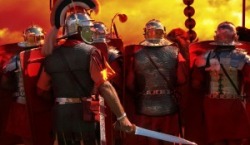
The Army came to dominate much of the land surrounding the Mediterranean Sea, including the province of Britannia and Asia Minor at the Empire's height. Little is known of the army under the monarchy. Even before the monarchy was overthrown, the army became a citizen army. It was notoriously inept. It became a professional army, with professional generals, along Greek lines in the long struggle with the Carthaginians. It became a superior army following the reforms of Gaius Marius around 100 BC.
The roman military was chosen by the census under servius Tullius. The wealthiest classes of citizens used weapons in the roman military such as helmets, round shields, greaves and breastplates, all made of bronze. They carried a spear and a sword. They followed the principle of “two forward, one back.” The second class of Romans was called “third rank”
or “old ones.” They were held in reserve. A thrusting spear was their weapon of choice. The third class was equipped with a long spear, or pike, a shield and heavy armor. The remaining Romans were light armed with the javelin. They were used for skirmishing, which provide some disruption of enemy ranks before the main event.
Even these measures were inadequate to the challenges Tome was to face. They went to war with the Hernicl, Volsci and Latini. Into the gap stepped on of the great generals Rome produced. Lucius Furlus Camillus. He held various offices such as interrex and dictator, but never king. He prevented the Romans from abandoning the city and fighting to stand their ground. cite resources http://www.crystalinks.com/romemilitary.html http://www.romanguide.com/images/ancient-rome.jpg
http://www.bc.edu/bc_org/avp/cas/his/CoreArt/art/resourcesb/dav_brutus.jpg
The roman military was chosen by the census under servius Tullius. The wealthiest classes of citizens used weapons in the roman military such as helmets, round shields, greaves and breastplates, all made of bronze. They carried a spear and a sword. They followed the principle of “two forward, one back.” The second class of Romans was called “third rank”
or “old ones.” They were held in reserve. A thrusting spear was their weapon of choice. The third class was equipped with a long spear, or pike, a shield and heavy armor. The remaining Romans were light armed with the javelin. They were used for skirmishing, which provide some disruption of enemy ranks before the main event.
Even these measures were inadequate to the challenges Tome was to face. They went to war with the Hernicl, Volsci and Latini. Into the gap stepped on of the great generals Rome produced. Lucius Furlus Camillus. He held various offices such as interrex and dictator, but never king. He prevented the Romans from abandoning the city and fighting to stand their ground. cite resources http://www.crystalinks.com/romemilitary.html http://www.romanguide.com/images/ancient-rome.jpg
http://www.bc.edu/bc_org/avp/cas/his/CoreArt/art/resourcesb/dav_brutus.jpg
Econmy/ Trade
By: Jason Olsem
During the time of the Roman Monarchy everything about Rome was just beginning. One main structurally item was the economy. Coinage of the time is unknown but they must have used some way of keeping track.
The Plebeians were the first to start trading with outside people. As they traded they began to compete with the social class set by the Aristocrats of the time. The Aristocrats did not like this and to keep the plebeians under control they disbanded the Monarchy and formed the Republic. When they did this they denied the Plebeians citizenship. What the Aristocrats did made the Plebeians mad but they held their temper but this laid the groundwork for years and years of social class conflicts. Much is unknown about this time of Rome because nobody kept track of what was done and by whom. Under the king, Servius Tullius, the first census was taken and divided early Rome into five Social Classes. Voting rights were also based upon economic wealth.
Works Cited
(No publisher or author found), The Roman Monarchy, Online, 2-May-2010. http://hrsbstaff.ednet.ns.ca/waymac/History%20A/A%20Term%201/1.%20Rome/Roman_time_line_2.htm
GNU Free Documentation, Roman Kingdom, Copyright 2005, Online , 2-May- 2010. http://www.spiritus-temporis.com/roman-kingdom/rome-under-the-kings.html
Matthews, Roy T., and Platt, F. DeWitt. The Western Humanities. Mountain View, CA: Mayfield Publishing Company, 2001. Print.
Art-Amy Green
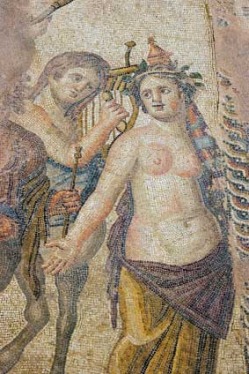
Art from the Roman Monarchy time was a hard thing to research. First of all, Rome was still a developing country at the time so most for the art was of the kings and high class, plus the roman people were more concentrated on building a good, strong country rather that making art. Second, after the Monarchy ended most of the art would have been destroyed because of how the seven brutal kings ruled. Also most of the art of the Monarchy was made in the Roman Republic when the country was more independent and people could do what they wanted. Or if there was much art found it was from the late Monarchy when the country was bigger and had more resources for art to be created.
Because Rome was made from Greeks and Etruscan in the Monarchy time the art was a mix of both cultures. The status were naked (like the greek statues) and were of solders and army heros from the Etruscan. These statues were also made of marble, there for, the artist needed to spend a long time carefully assembling them, one mistake and the sculpture could crumble. Most of the art, though, where made to be an influence on the people. Some of these where also "re-used" or imitated of old art from old Greek and Etruscan leaders and gods. Another form of art would be mossaic. Mossaic were painting put all over a building. walls, ceilings, even floors were covered in mossaics. The mossaics usually told stories and legend, some just for holiday or even just paintings of a family whom lived in that house. These paintings were usually in high class families and in temples but later it was used in churches to tell the story of god and the old testament.
Reference List
- http://www.ucalgary.ca/applied_history/tutor/firstteuro/culture.html
- http://library.thinkquest.org/26907/arts.htm#art
- http://www.art-and-artchaeology.com/timelines/rome/repuplic.republic.html
- http://www.the-roman.co.uk/origins.htm
- http://www.art-and-artchaeology.com/timelines/rome/rome.html
- http://library.thinkquest.org/CP0210200/ancient_rome/art.htm
- http://www.mosaicsbytlc.com/Portals/7/Roman-Mosaic.jpg
- http://www.students.sbc.edu/smith04/AugPrimPort.jpg
Geography, land, and Topography-Gage Baumgard
Rome was located in a way similar to ancient Etruscan cities, which like Rome depended on being able to get to the sea for trade. Being close to the sea, Rome was at a much lower elevation than most cities in the area. With the Tiber River flowing through this area, it left the low land around Rome very marshy.
Originally, the citizens of early Rome lived on hills around the marshes, rising above them. The hills were mostly made of a rock called tufa. They used this rock to build things like foundations and early city walls. People still use this rock today for building certain things. Some parts of the marshes were later drained in order to allow people to live between the hills.
Sources:
Wikipedia.org (Used for picture of map of early Rome. [can’t cite well])
Mairamilani.com, Ancient Rome Geography, Glovanni Milani (For information.)
Originally, the citizens of early Rome lived on hills around the marshes, rising above them. The hills were mostly made of a rock called tufa. They used this rock to build things like foundations and early city walls. People still use this rock today for building certain things. Some parts of the marshes were later drained in order to allow people to live between the hills.
Sources:
Wikipedia.org (Used for picture of map of early Rome. [can’t cite well])
Mairamilani.com, Ancient Rome Geography, Glovanni Milani (For information.)
